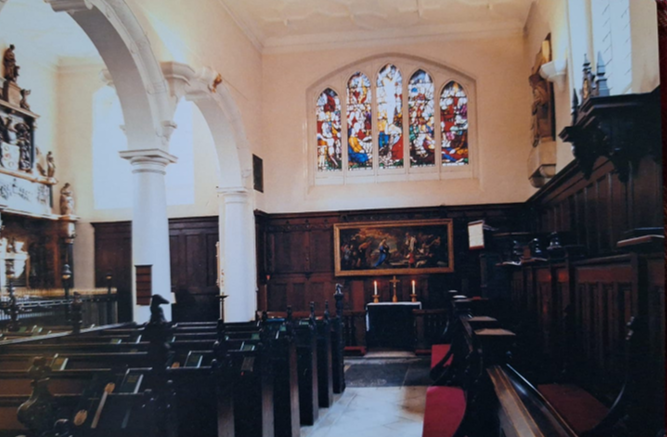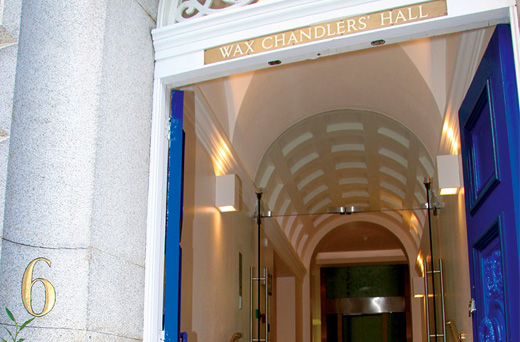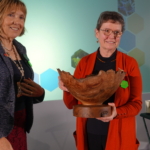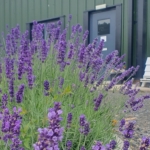On our doorsteps…The Charterhouse
Just a stone’s throw away from our Hall, you’ll find The Charterhouse Almshouses
I paid a quick visit.
A few weeks ago, before Christmas, I had to come into The City for a work meeting with a colleague in one of the many interesting little pubs just the other side of St. Bartholomew The Great Church in Smithfield. That is how all work meetings should take place. I was early and then he texted me to say that he was running half an hour late. Well, I could have gone off to the pub and waited, but I found myself at the gates of Charterhouse in Charterhouse Square. A sign said that The Museum and Chapel were open to view….And it was FREE. So, in I went.
I always knew that this place had existed, indeed one of my Father’s friends is a resident therein one of the Alms House, but never realised how fascinating it is. The history of the Charterhouse dates to the bubonic plague pandemic of 1348, when land, which is now Charterhouse Square was leased by Sir Walter Manny to be used as an emergency cemetery to bury victims of the disease. The terrible impact of the plague, also known the “great pestilence” or the “black death”, meant that around 60% of the population of London died in a very short space of time. So, I had just walked across thousands of bodies.
Sir Walter Manny, a Baron and former soldier who came to the court of Edward III paid for the lease of land as a mass burial site and later the building of a Chapel nearby to pray for their souls. The Chapel is now more in the later Tudor style and is used daily by the residents.
After the plague had subsided the Bishop of London, Michael Northburgh, had the idea of founding a Carthusian monastery, known as a Charterhouse, having been impressed by one he visited in Paris. Sir Walter Manny was also involved in sponsoring this new monastery, and after Northburgh’s death he went on to found what became the impressive and well-respected London Charterhouse in 1371, on land adjacent to the emergency cemetery.
The monastery thrived for many years, but as a result of Henry VIII’s dissolution of the monasteries, the Charterhouse was disbanded and Charterhouse was confiscated by the Crown. For a while afterwards it was used as a store, including for the King’s tents and hunting nets, and lodgings.
Sir Edward North became the new owner of the Charterhouse in1545. He began building a grand Tudor mansion using and adapting the buildings of the former monastery. The mansion passed through the ownership of several wealthy noblemen most notably Thomas Howard, the 4th Duke of Norfolk. Amongst the many elite guests entertained during this period were Elizabeth I, who stayed just before her coronation in 1558 and met her first Privy Council in the Great Chamber, and James I (James VI of Scotland) who also stayed prior to his coronation and created 130 new knights also in the Great Chamber.
In 1611, Thomas Sutton bought the Charterhouse and proceeded to establish the charity that still bears his name today. Born in Lincolnshire, Sutton attended Cambridge University and held the post of Master of the Ordnance in the North for much of his life. He gained further wealth through leasing land he owned for coal mining, a fortuitous marriage, and later in his life becoming one of the chief money lenders to the aristocracy. Sutton wished to use the Charterhouse to set up a ‘hospital’ (or almshouse as we would now call it) for up to 80 “poor Brothers”, and a school for 40 “poor boys”.
The school grew and evolved, and alumni include William Makepeace Thackeray and John Wesley. However, it eventually left the site and moved to Godalming in Surrey in 1872, becoming the Charterhouse school known today. Meanwhile the alms house remained on the site and the residents, became known as Brothers, although are no longer exclusively men, they still eat communally in the Great Hall as they would have done in the 17th century much has changed in the intervening years.
Today the residents, or Brothers (and suppose sisters) of Charterhouse, are still very much in the spirit of Sutton’s charity, maintaining an element independent living, but also assistance and care in their latter years. I believe one of them is on the verge of becoming a Freeman of our Company.
If you have half an hour to spare as I did, it is well worth a visit.
Jon Simpson
Court Assistant




